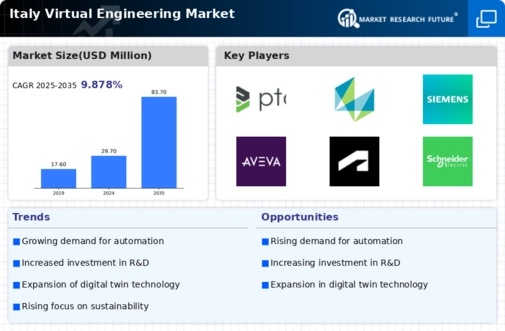The Italy Virtual Engineering Market has been experiencing significant growth as businesses increasingly adopt advanced technologies to enhance their operational efficiency and product development processes. This market encompasses various solutions and services that integrate virtual simulations, digital twins, and other engineering innovations. Companies operating within this landscape strive to leverage the competitive advantages offered by these technologies, which include reduced time to market, improved collaboration among teams, and enhanced product quality.
The increasing demand for digital transformation across industries such as automotive, aerospace, manufacturing, and construction has spurred fierce competition, as companies are investing in their capabilities to deliver innovative solutions tailored to their customers' needs.PTC has established a formidable presence in the Italy Virtual Engineering Market, focusing on providing software solutions that facilitate product design, development, and performance analysis. The company is renowned for its robust product lifecycle management (PLM) and computer-aided design (CAD) offerings that empower organizations to optimize their engineering processes.
PTC's strong brand reputation in Italy is attributed to its commitment to innovation, characterized by continuous updates and features that address industry-specific challenges faced by Italian enterprises. The company's established customer base and strategic partnerships within various sectors have further enhanced its competitive standing, allowing PTC to effectively cater to local market demands while ensuring the delivery of cutting-edge engineering solutions.
Hexagon, another key player in the Italy Virtual Engineering Market, offers a comprehensive range of solutions that encompass measurement, visualization, and geospatial technologies. The company’s portfolio includes advanced software and hardware products tailored for industries such as manufacturing, automotive, and construction. Hexagon’s strengths lie in its continuous innovation and ability to deliver integrated solutions that enhance operational efficiency and accuracy.
Over recent years, Hexagon has also engaged in strategic mergers and acquisitions to bolster its market capabilities in Italy, allowing it to expand its technological prowess and service offerings. These efforts reflect Hexagon’s ongoing commitment to enhancing its service quality and competitive edge within the region's virtual engineering landscape, positioning the company as a reliable partner for businesses seeking to navigate the complexities of modern engineering challenges.






















